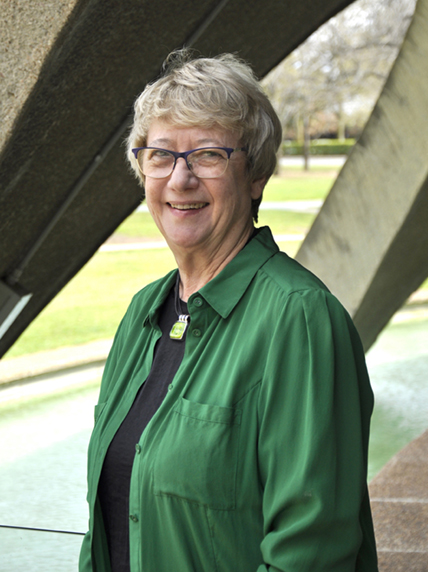
Director’s Preface
This report summarises the activities and achievements of the Australian Research Council Centre of Excellence for Core to Crust Fluid Systems (CCFS) in 2016 (commenced mid 2011). Activities include research, technology development, stakeholder engagement, international links and research training.
The overarching goal of CCFS is to understand Earth’s internal dynamics, evolution and fluid cycles from core to crust. CCFS multiplies the capabilities of three national centres of research excellence in Earth and Planetary Sciences: Macquarie University (Administering Institution), Curtin University and the University of Western Australia (Collaborating Institutions). The Geological Survey of Western Australia is a Partner Institution and researchers from Monash University and the University of New South Wales are formally affiliated. Our strong formal international partnerships and growing networks leverage our resources across intellectual, infrastructure and funding bases.
New instrumentation operational in 2016 includes the CAMECA NanoSIMS 50L ion probe, continuing the CCFS vision of delivering new techniques and applications in spatially resolved (in situ) analysis. These in situ methodologies solve the problems of averaging relatively large volumes of minerals, including the obscuring of fine-scale variations. Resolution of compositional variations at the nano- to micro-scale levels is commonly crucial to understanding the whole range of fluid-related processes across deep mantle and crustal domains, including metasomatism and mineral deposit formation. This change in focus from bulk to nano- and micro-scale analytical datasets aligns with strong industry feedback through 2016.
A new CCFS initiative that gathered momentum in 2016 is the organisation of a national collaborative consortium for distributed experimental capabilities, linking these Australian facilities as a virtual Centre (enabled by the ARC LIEF Grant “Australian virtual experimental laboratory: a multimode geoscience facility”). Australia was once the leader in experimental petrology, a field that some decades ago ushered in a new era for geoscience directions, using experimental validation and prediction to better understand Earth processes. Geoscience is now on the brink of a great opportunity for a renaissance of experimental peak relevance, enabled by the huge technological advances in experimentation and in high-resolution nano- and micro-analysis, heralding a new ability to tackle first-order problems in Earth Sciences. The construction of a laser-heated diamond anvil cell system will give us access to the pressures of the Earth’s core, enabling research into the lowermost mantle, core and the interiors of other planets.
The seven Flagship Programs implemented in 2014 to fulfil the Research goals of CCFS through 2018 have been successful in realigning our research strategies to deliver further transformational outcomes and leave a legacy in knowledge, new technology and methodologies.
Leading-edge research outcomes in 2016 ranged across a wide spectrum of discoveries amply demonstrating the power of CCFS’ signature approach of integrating geophysical, geochemical and tectonic datasets, with stunning examples of nano- and micro-analytical and imaging outcomes leading to new insights on global events. Examples include the first recognition of an Archean microcontinent in Western Australia between the Pilbara and Yilgarn cratons by combining geophysical and geochemical interpretation; demonstration of the power of Hf Isotopic mapping and zircon geochemistry in unravelling the evolution of the Pilbara, in tracking fertile regions for copper-gold deposits, in identifying hidden Archean crust in Gondwana terranes; high-resolution imagery captures the actual formation process of some diamonds; evidence from rare minerals in corundum from N. Israel for highly-reduced mantle conditions; captivating glimpses of early-Earth conditions for life using geochemical and virtual approaches; establishing the complexity of subduction zone mantle; and illuminating how and where deep fluids move around 40 km beneath the surface. This is an eclectic selection of some of the Research Highlights.
Prestigious external awards for CCFS Chief Investigators included the announcement of the award of the Australian Academy of Science (AAS) Anton Hales Medal in 2017 to Juan-Carlos Afonso. This follows two previous years of AAS awards including the 2016 Nancy Millis Medal to Elena Belousova and the 2015 Anton Hales Medal to Yingjie Yang. Four CCFS Chief investigators (Bill Griffin, Sue O’Reilly, Zheng-Xiang Li and Simon Wilde) were named as highly-cited researchers by Clarivate Analytics (previously Thomson Reuters) in 2016. The outstanding quality of CCFS researchers, and their continuing success in gaining external leverage of resources: the most recent CCFS ARC Future Fellow, Kate Selway, will commence in 2017 - making a total of eleven Future Fellowships awarded to researchers in CCFS.
81 PhD students undertook research aligned with CCFS in 2016. CCFS postgraduates are producing world-class research with authorship of 41 publications (26 first-authored) in high-impact journals in 2016 and 78 presentations at peak international workshops and conferences. Participation of early-career researchers reached 25.
Important national initiatives relevant to the future of Geoscience were being formulated during 2016. These include the draft Decadal Plan for Earth Sciences from the Academy of Science National Committee for Earth Sciences, the setting up of the formal structure for the implementation of the UNCOVER initiative (www.uncoverminerals.org.au/purpose), the Chief Scientist’s Review of national infrastructure funding, planning for the anticipated new AuScope NCRIS bid, and the 2030 draft Strategic Plan for the Australian Innovation, Science and Research System (from Innovation and Science Australia). CCFS participants contributed to all of these processes, and indeed, the 4-D Lithosphere Mapping approach, established by GEMOC and CCFS with industry partners, forms the robust conceptual basis for UNCOVER.
Alignment with such national geoscience strategies and government initiatives demonstrates the significant impact of CCFS’s transformational research. CCFS is providing vital new knowledge about Australia’s geological evolution, and a framework to guide smart new mineral exploration, fulfilling the CCFS vision of “Delivering the fundamental science needed to sustain Australia’s resource base”.
Professor S.Y. O’Reilly

CCFS participants at the annual Research Meeting held on 21-22 November 2016.

 ARC Centre of Excellence for Core to Crust Fluid Systems
ARC Centre of Excellence for Core to Crust Fluid Systems